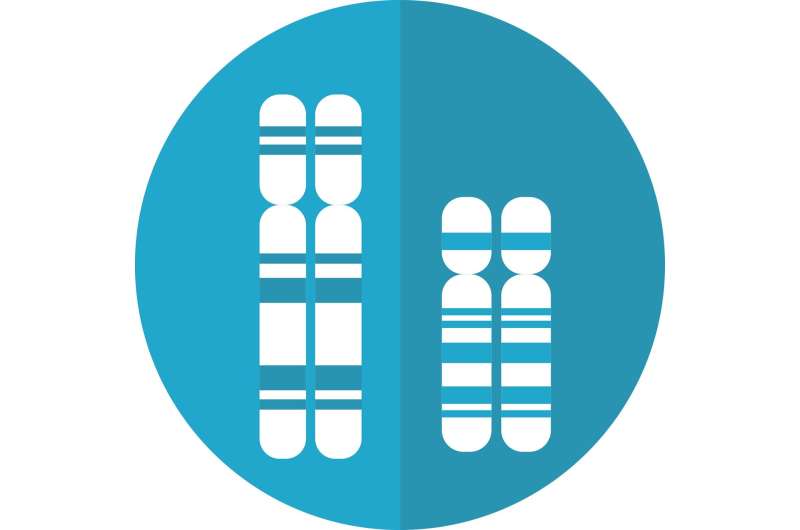How the mouse X and Y chromosomes compete with each other to control offspring

The molecular function of genes in mice has a major influence on the sex of their offspring, according to a new discovery that reveals more about the impact of genes on animal fertility.
Under normal circumstances, the laws of genetics ensure that sperm carrying an X or a Y chromosome have an equal chance to fertilise the egg, and so parents have an equal chance of having a daughter or a son. However, male mice with partial deletions on their Y chromosome (Yqdel males) break this iron-clad law, producing a distorted sex ratio with many more female than male offspring. Until now, how this occurs has been a mystery.
Now, joint research carried out by teams from the universities of Kent, Cambridge, Essex and Paris Descartes shows that the key lies in the shape of the sperm and how well they are able to swim.
First, the team showed that they could correct the sex ratio distortion by performing IVF fertilisation—proving that the Yqdel males produce equal numbers of X- and Y-bearing sperm and that both types of sperm are equally capable of producing offspring once they actually reach the egg.
Next, the team used high-resolution microscopy and state-of-the-art computer image analysis to show that sperm from Yqdel males are shrunken and distorted. Crucially, the Y-bearing sperm cells were more severely affected than X-bearing sperm cells, suggesting that their function was impaired.
To show this, they used FISH labelling—a technique that stains the X or Y chromosomal DNA different colours. This allowed them to identify which cells carried which chromosome, and correlate this to the shape of each individual cell. Using another transgenic strain of mice that "switches off" Y-linked genes rather than deleting them, they proved that the shape difference between X- and Y-bearing sperm was caused by gene expression differences, and not simply by the loss of DNA in the Yqdel males.
Finally, they carried out "sperm races" to isolate the very fastest-swimming sperm cells from Yqdel males, and confirmed via FISH that these tiny athletes were predominantly X-bearing sperm cells—thus explaining the predominance of daughters in Yqdel offspring.
Dr. Peter Ellis from Kent's School of Biosciences led the research. He said: "We have known for some time that the mouse X and Y chromsomes compete to produce female versus male offspring, with genes on the X favouring the production of daughters and genes on the Y favouring sons. Our research now reveals for the first time how this occurs. When the Y-borne genes are deleted, the X-borne genes sabotage sperm head development, making the Y-bearing sperm swim slower and securing a 'selfish' advantage for X-bearing sperm in the race towards the egg. We also found that the use of IVF can reverse this imbalance, which has clear implications for the use of these techniques to influence the sex of mammal offspring."
More information: Claudia Cattoni Rathje et al, Differential Sperm Motility Mediates the Sex Ratio Drive Shaping Mouse Sex Chromosome Evolution, Current Biology (2019). DOI: 10.1016/j.cub.2019.09.031
Journal information: Current Biology
Provided by University of Kent



















